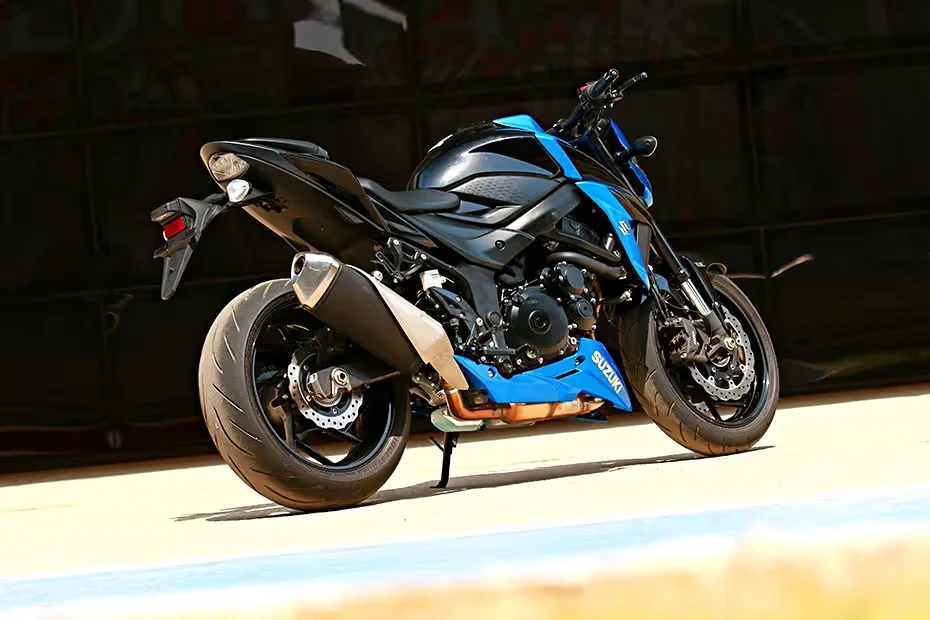I’ve learned that the best machines aren’t always the loudest on social media. Sometimes, they’re the ones quietly rewriting the rules.
While Yamaha’s R7 has long been the darling of the middleweight sportbike crowd, Suzuki’s underdog is pulling off a ninja move this year. Let’s break down why riders are defecting faster than you can say “inline-4.”
1. The Inline-4 Secret
The GSX-S750’s 749cc inline-4 engine isn’t just good—it’s borderline addictive. Derived from Suzuki’s GSX-R750 lineage, this engine delivers power so silky that it’s like riding a wave of torque.
Bikers rave about that “buttery smooth” delivery, especially when the tachometer hits 6,500 RPM and the bike surges forward like it’s been holding back a secret.
Compare that to the Yamaha R7’s 689cc parallel-twin. Sure, the R7’s low-end grunt is fun for zipping through city traffic—like quick stops at red lights or darting between lanes.
But once you hit the highway? The Suzuki’s inline-4 flexes its muscles, offering a broader powerband and a visceral intake roar that’s been called “the best in its class.” One rider on the forum shared: “The R7 feels like a sprinter; the GSX-S750 is a marathon runner with a nitro boost.”
While the R7 taps out around 73 horsepower, the Suzuki cranks out 120+ horsepower at the wheel—enough to leave its Yamaha rival eating dust on open roads.

2020 Suzuki GSX-S750
2. Suzuki’s Safety Net vs. Yamaha’s Philosophy
The 2025 GSX-S750 comes standard with a 3-mode traction control system—a feature Yamaha still hasn’t added to the base R7.
Suzuki’s system is like a ninja bodyguard: subtle but ready to step in if things get sketchy. One U.S. rider on Team-BHP shared how the TC saved their bacon during a sudden downpour: “I felt the rear tire slip, but the bike corrected before I even blinked.”
Meanwhile, the R7’s lack of traction control means you’re flying solo when the pavement gets greasy. Sure, it has ABS, but in 2025, skipping TC feels like showing up to a gunfight with a butter knife.

Yamaha R7
3. The GSX-S750’s “Undercover Superstar” Vibe
Owners love that it doesn’t scream, “Look at me!” but still turns heads with its streetfighter stance.
The Suzuki’s Low RPM Assist is a godsend in stop-and-go traffic, preventing stalls when you’re crawling through rush hour. And unlike the R7, which riders complain turns into a leg-roaster in summer traffic, the GSX-S750 manages heat like a pro.
A Delhi-based owner on Team-BHP says: “Even in 100°F traffic, the fan rarely kicks in. Once you’re moving, it’s like the heat never happened.”
The R7’s aggressive riding position might win style points, but your wrists and lower back will beg for mercy after an hour in the saddle. The Suzuki? is just right for both city slogs and weekend blasts.
4. $200 Mods That Humiliate the Competition
Owners are hacking their bikes with budget-friendly mods that punch way above their weight. YouTube is flooded with tutorials for Yoshimura exhaust swaps, LED lighting upgrades, and even DIY air filter tweaks—all for a fraction of the cost of the R7’s OEM parts.
Take Scorpion exhausts: A full system for the Suzuki runs about &600, while the R7’s Akrapovic setup starts at $1,200. One rider on Reddit bragged about turning their GSX-S750 into a “sleeper” with $200 in mods: “I smoked a stock R7 on the straights. The Yamaha guy couldn’t believe it wasn’t turbocharged.”
5. Why Ex-R7 Riders Are Jumping Ship
Fuel Efficiency: The R7 sips fuel at 58 MPG vs. the Suzuki’s 45 MPG.
Updates: Suzuki went all-in for 2025, adding a slipper clutch, lighter wheels, and killer traction control. Yamaha? They left the R7 untouched to focus on the new R9. Ouch.
6. Suzuki’s 2025 Upgrades Yamaha Can’t Match
Rumors are swirling about Suzuki’s next moves—like LED headlights and more tech tweaks. Meanwhile, Yamaha’s R7 feels like yesterday’s news. As one dealer whispered: “The R7’s for track junkies. The Suzuki? It’s for riders who actually live on their bikes.”






